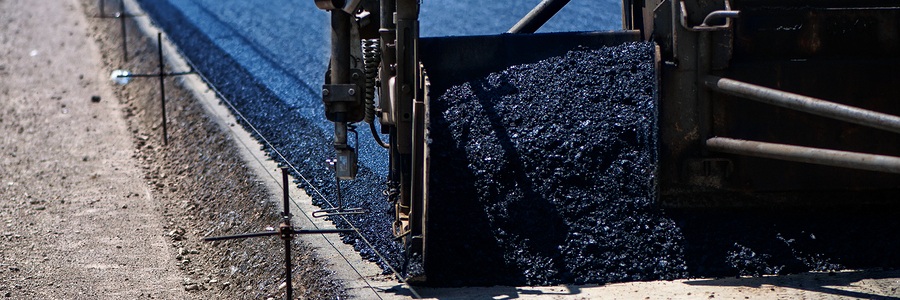Some Ideas on A1 Professional Asphalt & Sealing Llc You Need To Know
Some Ideas on A1 Professional Asphalt & Sealing Llc You Need To Know
Blog Article
A1 Professional Asphalt & Sealing Llc for Dummies
Table of ContentsSome Of A1 Professional Asphalt & Sealing LlcAbout A1 Professional Asphalt & Sealing LlcThe 10-Second Trick For A1 Professional Asphalt & Sealing LlcSome Ideas on A1 Professional Asphalt & Sealing Llc You Should KnowSee This Report on A1 Professional Asphalt & Sealing Llc

The oil in a car engine is not simply oil. The REOB consists of all the ingredients that were in the waste oil as well as the wear metals from the engine (generally iron and copper).
By making many blends utilizing different REOB samples and various asphalt binders, the variants largely can be balanced out. Several States provided samples of well-known REOB structure to TFHRC scientists, that evaluated the samples to compare the percentage of included (understood) REOB to the discovered (examined) amount. The analyses revealed a comparable portion of added and located REOB.
A1 Professional Asphalt & Sealing Llc for Beginners
None of those States realized that the asphalt they were getting consisted of REOB. One State insisted its examples had no REOB - https://www.anyflip.com/homepage/wmzvi#About.
Of the 1,532 examples tested, 12 percent had REOB, and some contained considerably high levels of it at 1020 percent. The highest possible level was 34 percent in an example from Texas, which TxDOT had used in a patching substance. This testing likewise disclosed the presence of phosphoric acid in 11 percent of the samples, and 2 percent consisted of ground tire rubber.
2 years earlier at TRB's annual conference, the Federal researchers held an REOB workshop and provided the searchings for of their lab analyses to a standing room-only crowd. Some agencies do not specifically ban REOB, they do enforce physical examinations that avert its useeffectively a ban. Others do not ban it by spec, yet have agreements with asphalt suppliers to stay clear of making use of REOB
The Ultimate Guide To A1 Professional Asphalt & Sealing Llc
A handful do enable REOB, some within certain limitations. As an example, Ohio and Texas limitation degrees to much less than 5 percent of the asphalt. To develop a trusted examination method that all States can use, the TFHRC researchers established up a round-robin test strategy. The participants are 11 State highway agencies (Illinois, Massachusetts, Minnesota, Mississippi, Montana, North Carolina, Oklahoma, South Carolina, Texas, Vermont, and Wyoming), 2 independent testing laboratories, the Ministry of Transport in Ontario, Queen's College in Ontario, and an Ontario paving professional.
In total, the scientists prepared and shipped 720 blends. The individuals are testing the samples individually using the standards provided by the TFHRC researchers. The round-robin screening my explanation is virtually completed, and TFHRC remains in the process of accumulating the results. The result will certainly be a proposed AASHTO examination approach that any kind of State can adopt and use (asphalt sealcoating in st louis).
The sidewalk with REOB, which lies 0.6 mile (1 kilometer) from the sidewalk without REOB, has similar subgrade, web traffic density, and climate. However, the sector of Highway655 with 5 to 10 percent REOB revealed considerable fracturing. In this instance, the existence of REOB was the determined reason for breaking at a reduced temperature levels.
"In our experience in Canada, even small amounts of 23 percent can be a trouble." Similarly, a section of examination sidewalk in Minnesota (MN1-4) located to have REOB also split prematurely. The pavement done well for the very first 3 to 4 years, but then started to split. This sidewalk is likewise based on low temperature levels.
The Main Principles Of A1 Professional Asphalt & Sealing Llc
The tests were not comprehensive, but they showed that at degrees of 6 percent or even more, the tensile toughness of the asphalt went down considerably. At a degree of 3.5 percent REOB, the variation in the physical examination techniques was higher than the result of REOB. As a matter of fact, it was difficult for researchers to examine whether REOB existed.

One binder criterion considered is the difference between the reduced temperature level critical spec temperature for rigidity (S) in the flexing light beam rheometer and the flexing beam rheometer creep incline (m-value) kept in mind as Tcritical. 2 independent research study teams, one from AASHTO and the other from the Asphalt Institute, concluded that even more research is needed on the use of REOB in asphalt.
Previously, all asphalt screening measured engineering residential or commercial properties such as rigidity. These tests do not show what products had been contributed to the asphalt. One example obtained throughout the TFHRC research study had a very strange evaluation. The sample had the complying with test results: Superpave PG 64-28 with a heat quality of 67.3 Tcritical on the bending beam of light rheometer was 6.7 degrees Celsius.

The Best Guide To A1 Professional Asphalt & Sealing Llc
These results show there are weaknesses in the standard engineering testing procedures that might be made use of. The producer might have an economic advantage and the product passes all the standard examinations, however the item might not be beneficial to making sure lasting performance. To address this issue and the expansion of new asphalt additives and extenders, TFHRC is beginning a study program to make use of portable spectroscopic gadgets, x-ray fluorescence spectroscopy, and Fourier transform infrared spectroscopy to make it possible for analyses to be done in the field instead of needing to take samples back to the lab.
Report this page